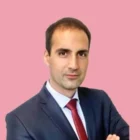SWITCH ON THE ASSYSTEM PODCAST
Season 1 Episode 3
Will SMR projects be a game changer?
PODCAST SUMMARY
In episode 3, we'll discuss how SMR can be a game-changer in the energy sector.
Today’s topic is a revolution in the energy sector - an innovative nuclear reactor design capable of playing a key role in the energy transition. ‘Small Modular Reactors’ (SMRs for short) are in fact small nuclear reactors that provide between 50 to 300 megawatts of electricity.
Currently, there are around 70 projects taking place around the world at various stages of development, with some models potentially available as early as 2030.
According to the OECD’s Nuclear Energy Agency, these mini-reactors could account for up to 10% of the world’s nuclear energy production by 2040. SMRs could meet the needs of isolated regions, in countries with less-developed electricity grids or whose financial capacities would make large reactors too costly. In this episode of our Switch On podcast, we’re discussing everything you need to know about Small Modular Reactors. Click the ‘listen’ button above to start streaming.
Will SMR projects be a game changer?
According to the OECD's Nuclear Energy Agency, Small Modular Reactors (SMRs) could provide 10% of the world's nuclear energy by 2040, accelerating the energy transition by providing access to low-carbon energy solutions in regions lacking infrastructure and equipment.
Laurence Roy, Technical Director responsible for SMR projects, and Benoît Blassel, in charge of all new reactor construction projects at Assystem explain more, below.
SMR, a key role in the energy transition
SMR (Small Modular Reactor) is the generic term used to designate reactor designs which are characterised by the way they’re manufactured. As many of the SMR’s components as possible pre-fabricated in a factory, before being assembled on-site, making them more cost-effective and quicker to assemble than large-scale nuclear plants. SMRs have the potential to meet the low-carbon energy needs of isolated regions, in countries with less-developed electricity grids or whose financial capacities would make large reactors too costly. Currently, there are around 70 projects taking place around the world at various stages of development. When we talk about SMRs, it is important to distinguish SMRs that are based on technologies like those used in existing pressurised water reactors today, from reactors that use other types of technology such as molten salt reactors, a project which Assystem has supported using digital twin solutions.
"By their novelty, SMRs are "UFOs," says Benoît Blassel, "they pose multiple technical, technological, and regulatory challenges, and impose model changes for the future."
Challenge n°1: Meeting the technical challenges
“SMRs highlight the opportunities and technologies that have been out of the limelight for some time, opening possibilities for uses that go further than simply producing electricity, such as industrial heat production, waste incineration, or the electrification of isolated, off-grid areas.” says Benoît.
Beyond that, it is the very economic model of the SMR that is being questioned, as Laurence Roy points out. The objective is clearly to be able to make reactors available on the market, which implies taking on different challenges: 1, scaling down the reactors; 2, their industrialisation considering the manufacturing challenges from the design phases; and 3, the flexibility of their uses : “The design of SMRs will need to respond to a wide range of different conditions, requirements, and the different siting locations. This means that within the framework of the studies, we will have to overcome challenges posed by the standardisation, replication, and modularity of the SMRs,” continues Laurence Roy. We also need to deal with the issues of innovation and scaling up elements that are still at the pre-concept stage.
Challenge n°2: Co-constructing regulations
Benoît Blassel explains that there is not yet an entire regulatory framework to guide a designer or a builder through the design, certification, and construction stages of SMRs: “Usually, regulatory approaches are understood as part of the feedback. In this case, the very nature of the projects, the challenges of internationalisation and different locations, require regulatory contexts and ways of working to be re-examined.” In reality, the difficulty will not lie directly in the level of reactor safety but in the demonstration of that level of safety. “The whole issue will be the ability to build a safety demonstration process, which does not currently exist - particularly for models that use less conventional methods such as molten reactors or high-temperature reactors, on which designers, constructors and operators can rely to carry out their certification and authorisation projects,” says Benoît. This objective will require a different kind of dialogue between all those involved (designers, operators, safety authorities), to co-construct the future requirements of new nuclear facilities which are designed to accommodate not only the new generation of small modular reactors, but to ensure these requirements are sufficiently harmonised from one country to another. “This last point is fundamental to allow large-scale serial replication,” says Benoît.
"The economic promise of SMRs lies in their capacity for series replication in an identical manner whatever the country, site, or operator. This will require a major effort to harmonise licensing requirements at international level."
Benoît Blassel
Challenge n°3: Interacting with a new ecosystem
Another point of differentiation is the industrial ecosystem mobilised around this type of project. Alongside traditional nuclear stakeholders (research institutions, energy distributors, technology developers, etc.), there are several non-specialist newcomers to the market who are interested in the prospects of nuclear power and SMRs, the quantities required and operational site adaptations needed and the multiple usage possibilities (heat or energy in other forms). These newcomers can position themselves as customers, investors, or start-ups that bring agile methodologies and project management practices that are different to those established in the industry (with many simulations and digital prototypes). “For the more ‘traditional’ players like Assystem, this ecosystem is both a challenge and an opportunity to question each of our practices and perhaps to contribute to finding new solutions to old problems,” explains Benoît.
"We see the involvement of medium-sized private organisations - even start-ups that are entering the field without experience, but also without the weight of history or habits picked up along the way."
Benoît Blassel
New business model and paradigm shift
“At this stage, SMRs possess incredible potential that is becoming clearer by the day,” says Benoit, adding; “but there are a lot of milestones to pass, not just on the technical side but also on the economic side.” In fact, SMRs are based on rather disruptive models in terms of mass production and marketing, involving a supply-chain operation: consequently, it will be necessary to reconcile “developing supply capacities that are probably local, to limit production costs, while keeping a standard aspect, from one development site to another“. A new business model will emerge, in contrast to the traditional nuclear model.
For a long time, conventional wisdom suggested, given the very substantial amount of investment, that increasing the power level was the way to lower the cost of the electricity produced. With SMRs, it is the ability to find different technological solutions and construction methods and to deploy them in much greater numbers, enough to reduce the unit investment cost and therefore produce electricity or another form of energy competitively without being a slave to size and output. Thus, operators are less constrained by the weight and volume of the necessary investments. “This business model will require a fascinating maturation phase to observe,“ continues Benoît.
This paradigm shift will be reflected in the realisation of SMRs during the study and manufacturing phases.
In this regard, the contribution of digital technology will be decisive in managing complexity. It will make it possible to work together with the various parties, to better share the work but also, through modelling and with the support of the system engineering methodology, to better guide and manage the initial definition of SMRs.
"Today we are looking to do the project differently, with new techniques, and new players. Digital enables this through its ability to manage complexity, to work together, to simulate different choices."
Laurence Roy
What about tomorrow?
Nuclear energy is at the heart of many of the world’s energy security and technical sovereignty challenges. This SMR approach carries the ambition of mass deployment on an international scale, taking on the challenges of geopolitics and considerations for the choice of technologies and the provision of materials. This will be one of the conditions of its development. “We think that if the SMRs effectively fulfil their promise of providing stable, controllable, decarbonised energy in formats of a few hundred megawatts, and once we overcome the technical and economic challenges, they will obviously have their place as a complementary, high-power nuclear energy source in all energy mixes,” says Laurence.
SMRs provide the promise of new skills, which will be a factor for attracting a new generation of people entering the nuclear industry to support and learn from its experts, forming ties between generations of experts all working towards a common goal.
Discover some of our projects in the nuclear industry:
- Small Modular Reactor feasibility study for a nuclear plant
- 3D animation to communicate on the locations of the SMRs
- Concept design for the STEP fusion tokamak
- Realisation of a BIM model for the dismantling of a nuclear reactor
- Quality inspection of the construction and installation works of structures and systems for a nuclear power plant
- Configuration, construction and commissioning activities for the Flamanville 3 EPR
- Licensing technical support for a nuclear power plant in Egypt
THE AUTHORS
SWITCH ON THE ASSYSTEM PODCAST
In Switch On, our engineering, digital and project management experts shed light on the projects and technologies that are contributing to the energy transition around the world today.


